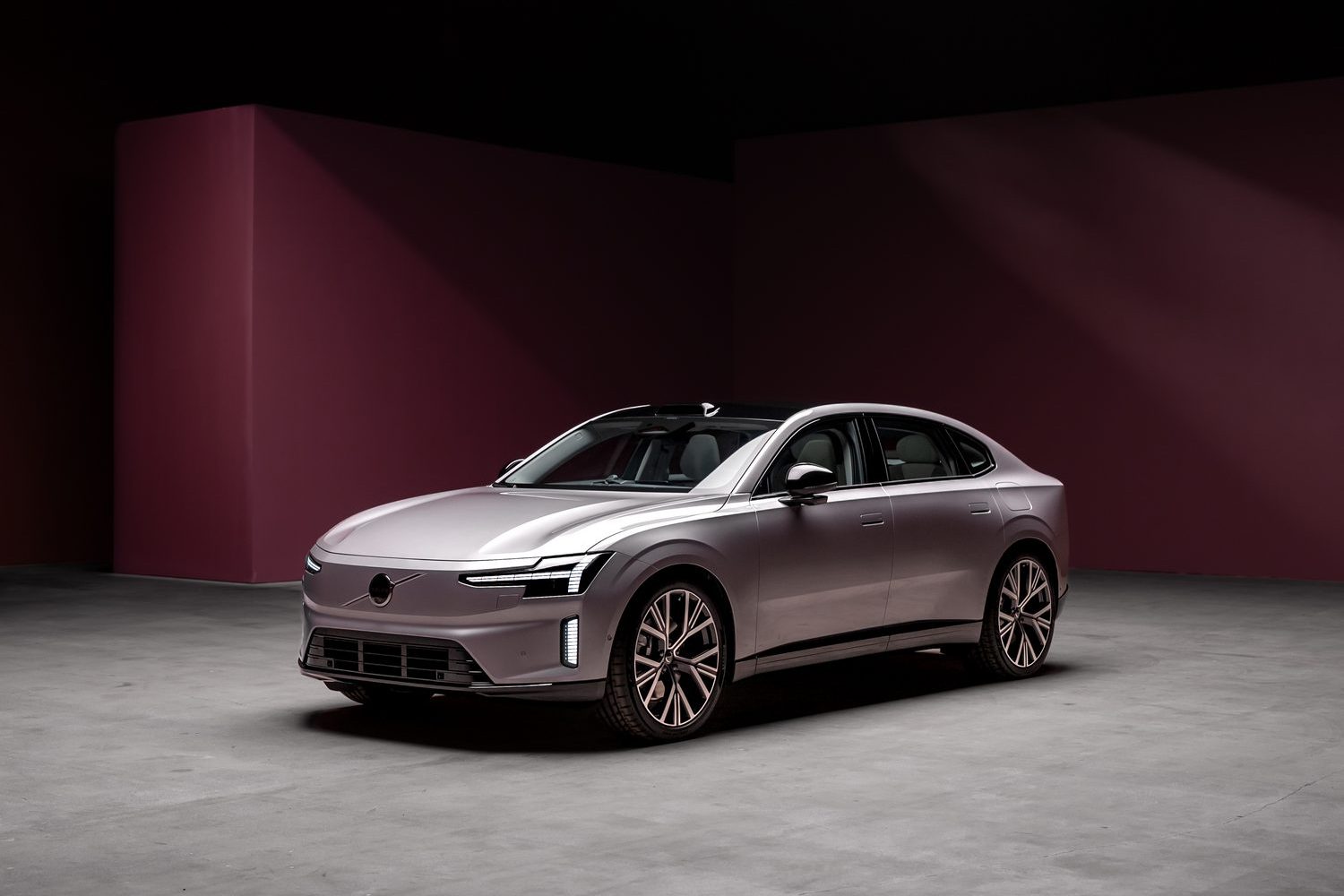The Volvo ES90 has been unveiled, to sit alongside the EX90 SUV at the top of the Swedish brand’s electric model range as an all-electric replacement for the Volvo S90 saloon.
The ES90 is the company’s first model to feature an advanced 800-volt electrical architecture that enables ultra-fast charging. Volvo claims it can add up to 300 kilometres of driving range in 10 minutes at a 350kW DC-charging station, while a 10 to 80 per cent recharge takes around 20 minutes.
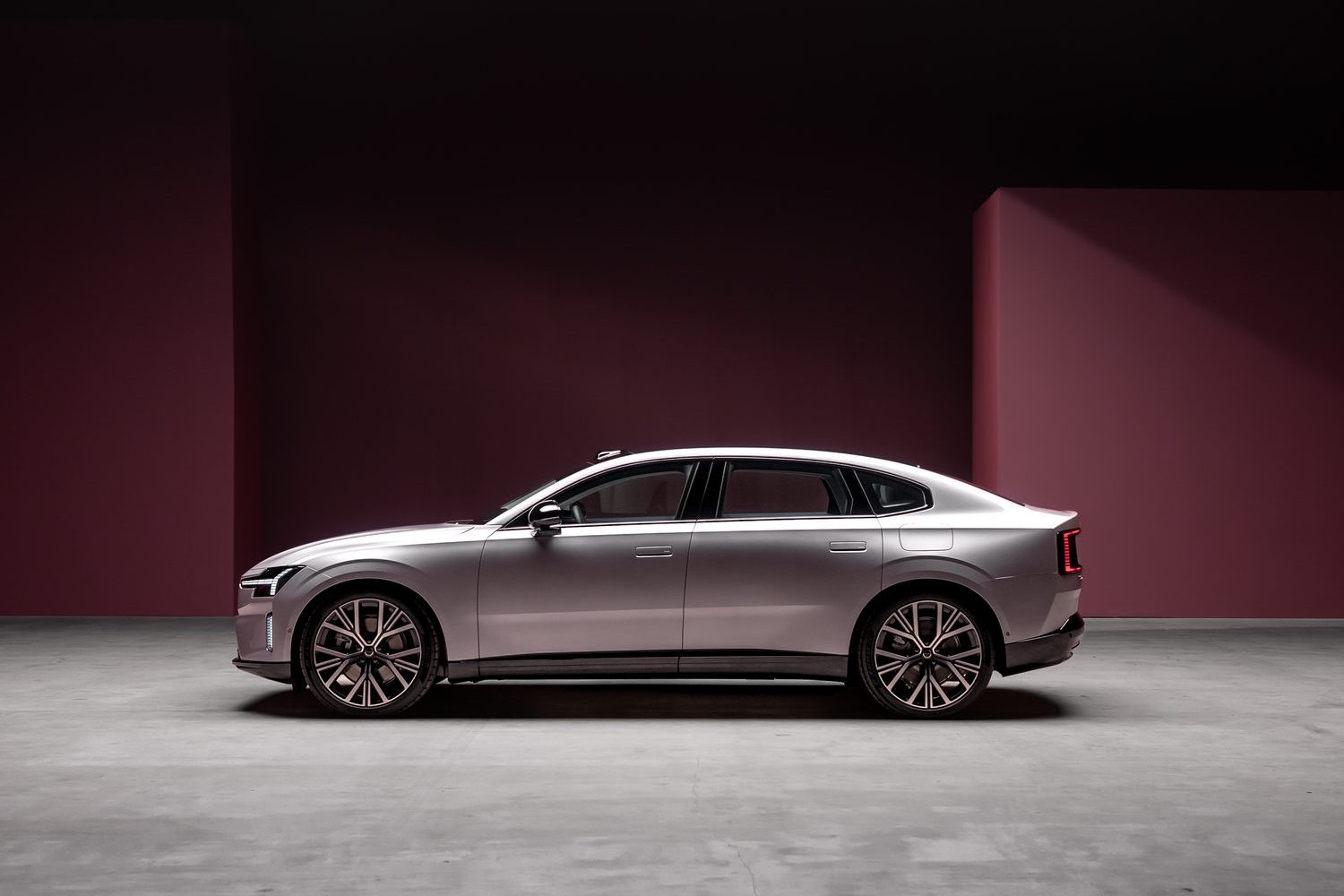
Measuring exactly five metres long, the Volvo ES90 is 31mm longer than the old S90. It is also wider, measuring 1,942mm (2,120mm including the unfolded mirrors), but perhaps most noticeably, it is now 1,545mm tall - a 105mm increase over the S90’s height. One of the reasons the ES90 is taller is to accommodate the sizeable 88kWh and 102kWh battery packs (usable capacities).
A familiar look for the Volvo ES90
It may be an entirely new car, but there is a familiar feel to the ES90’s exterior design, starting with the distinctive ‘Thor’s Hammer’ headlight design, and this LED daytime running light signature extends into the lower bumper section. Volvo’s ‘Iron Mark’ emblem is front and centre on the nose, with a smaller aperture in the bumper for cooling. Deep scallops run along the edges of the bonnet, creating a powerful but planted look.
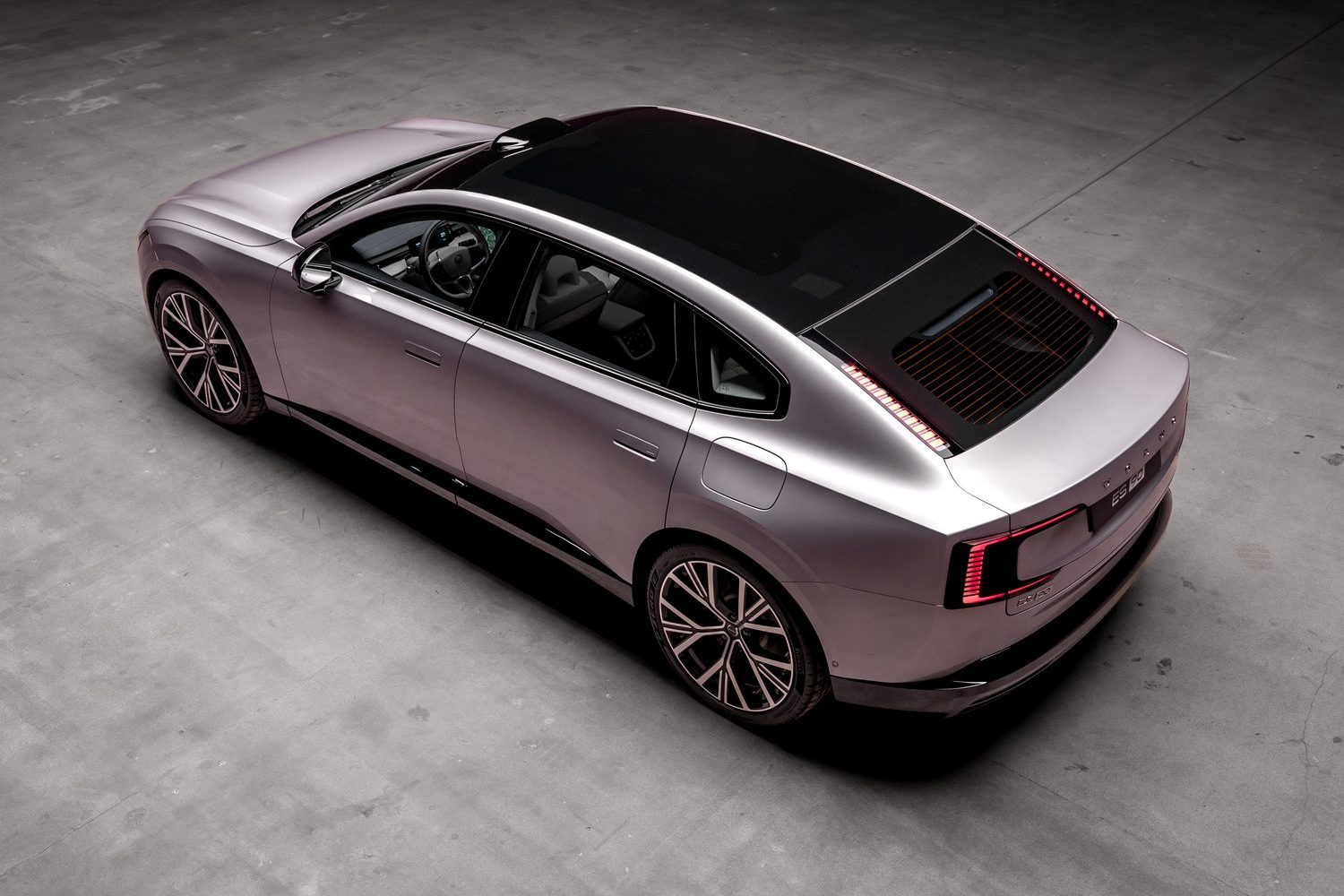
In the side profile, you see where the shift in design approach for the ES90 comes into play. It is no longer a traditional three-box saloon, indicated by the shorter rear end and a more sloping roofline that leads into a fastback-like tailgate, with the most subtle lips on the car’s trailing edge. As seen on the EX90, Volvo fits the ES90 with a lidar scanner atop the windscreen, which will play a crucial role in its suite of safety and driver assistance features to be rolled out over the coming years.
From behind, you can see a new iteration of the typical Volvo-like C-shaped lights with the unusual addition of an extra set of vertically stacked lights on either side of the rear window. The tailgate allows access to a 424-litre boot - which is down by 37 litres over the S90, incidentally. If more space is required, the three individual rear seats can be folded down. Volvo also adds a 22-litre storage box under the bonnet at the front for smaller items such as charging cables.
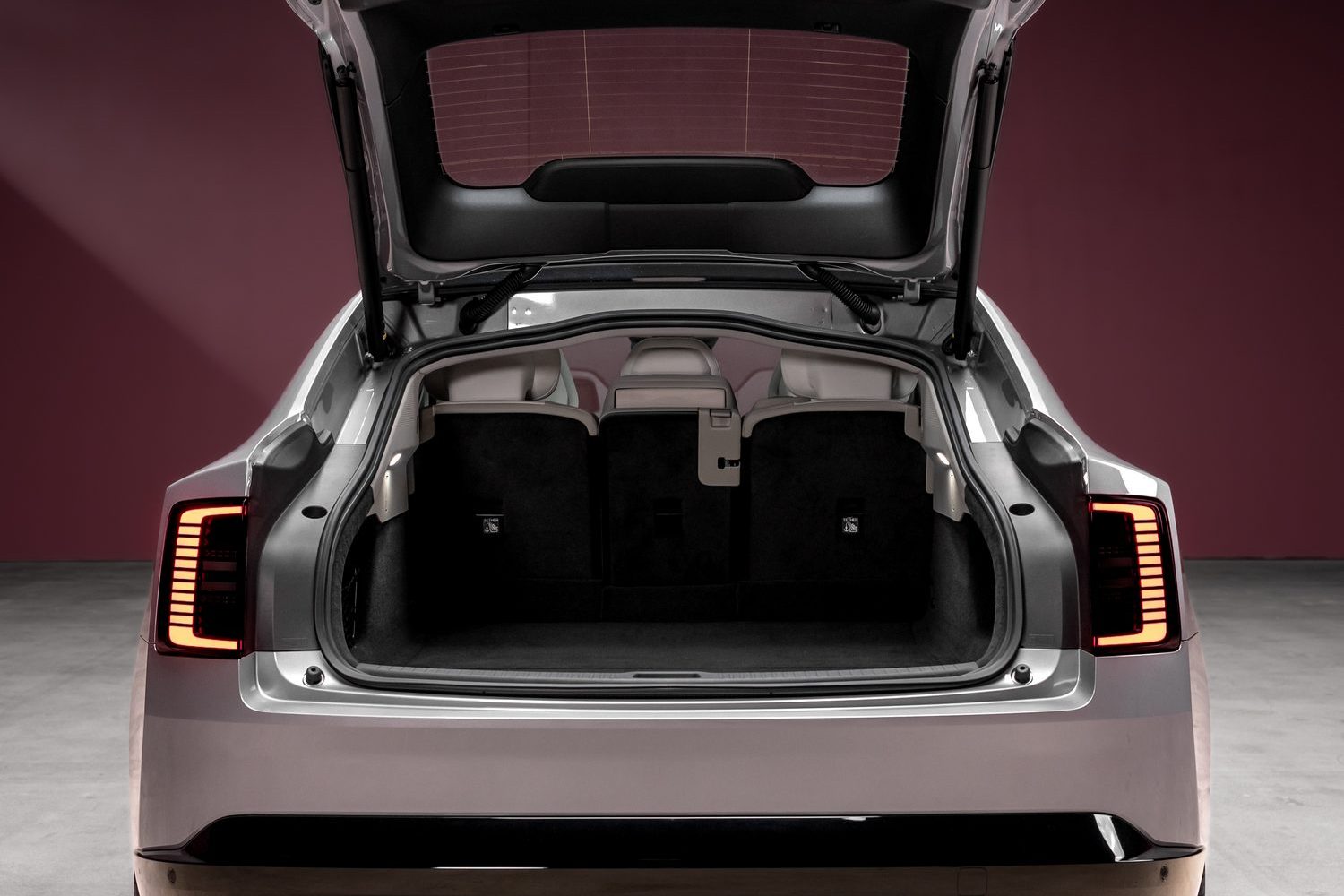
A range of wheels is available, from 20 to 22 inches in diameter, and there are seven exterior colours to choose from. Some models will ride on active air suspension.
Inside the Volvo ES90
The minimalist layout of the cabin underlines its premium aspirations. A nine-inch digital instrument display faces the driver behind the round, uncluttered steering wheel. The latter has flat, haptic touchpads for ‘Pilot Assist’ and media controls. A colour head-up display supports the driver with turn-by-turn navigation prompts and other essential information.
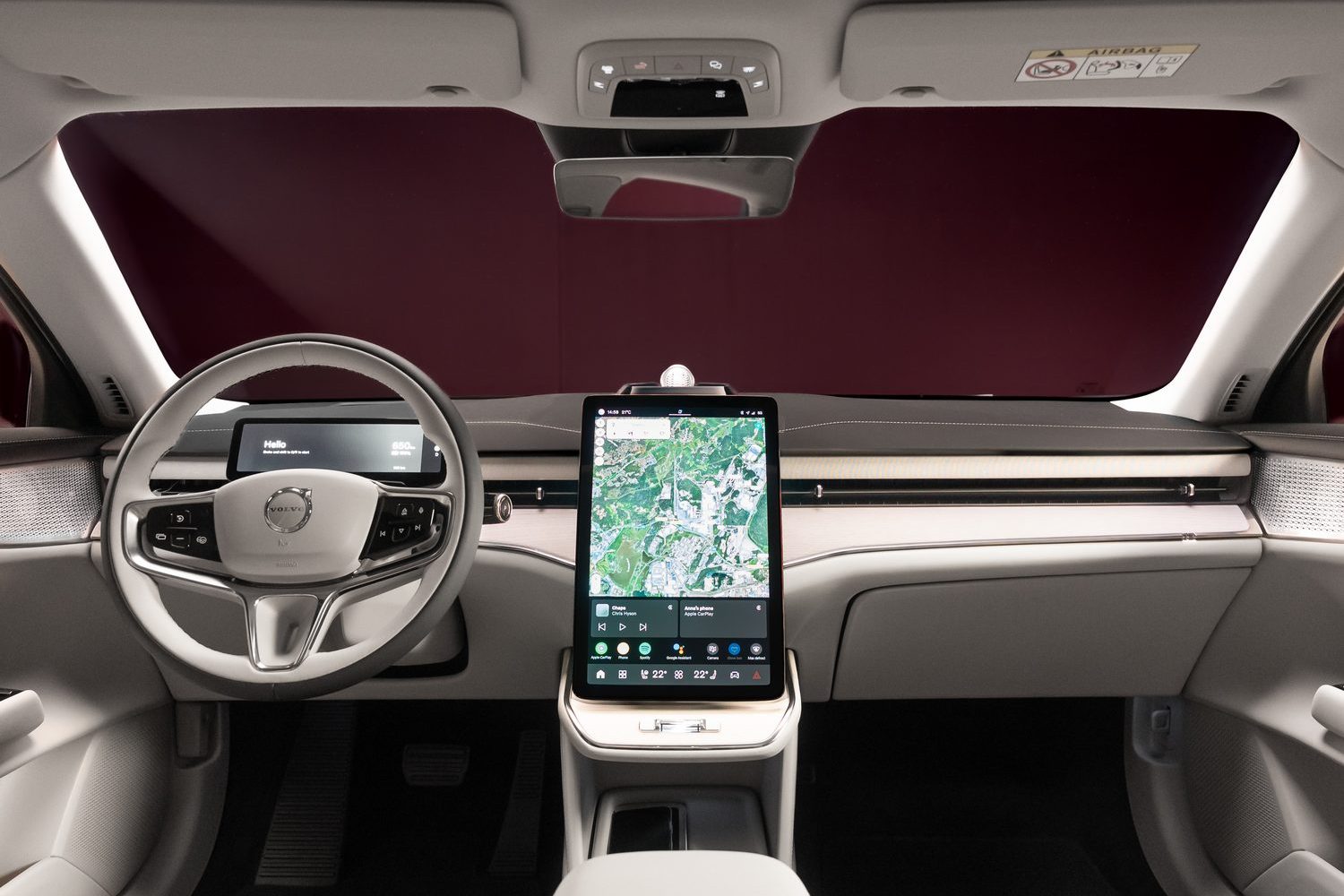
Orientated in portrait, the 14.5-inch touchscreen runs a Google-based infotainment system with built-in services including Google Maps, Google Assistant and access to many other apps via Google Play. Wireless Apple CarPlay and Android Auto enable smartphone mirroring.
Volvo says it has made a concerted effort to make the interior of the ES90 one of its quietest-ever cabins. Audiophiles will be equally pleased to see that three levels of sound system will be offered, with a 25-speaker Bowers & Wilkins setup topping the range, featuring spatial audio with Dolby Atmos.
Thanks to a long wheelbase of 3,102mm, those in the rear benefit from plenty of legroom.
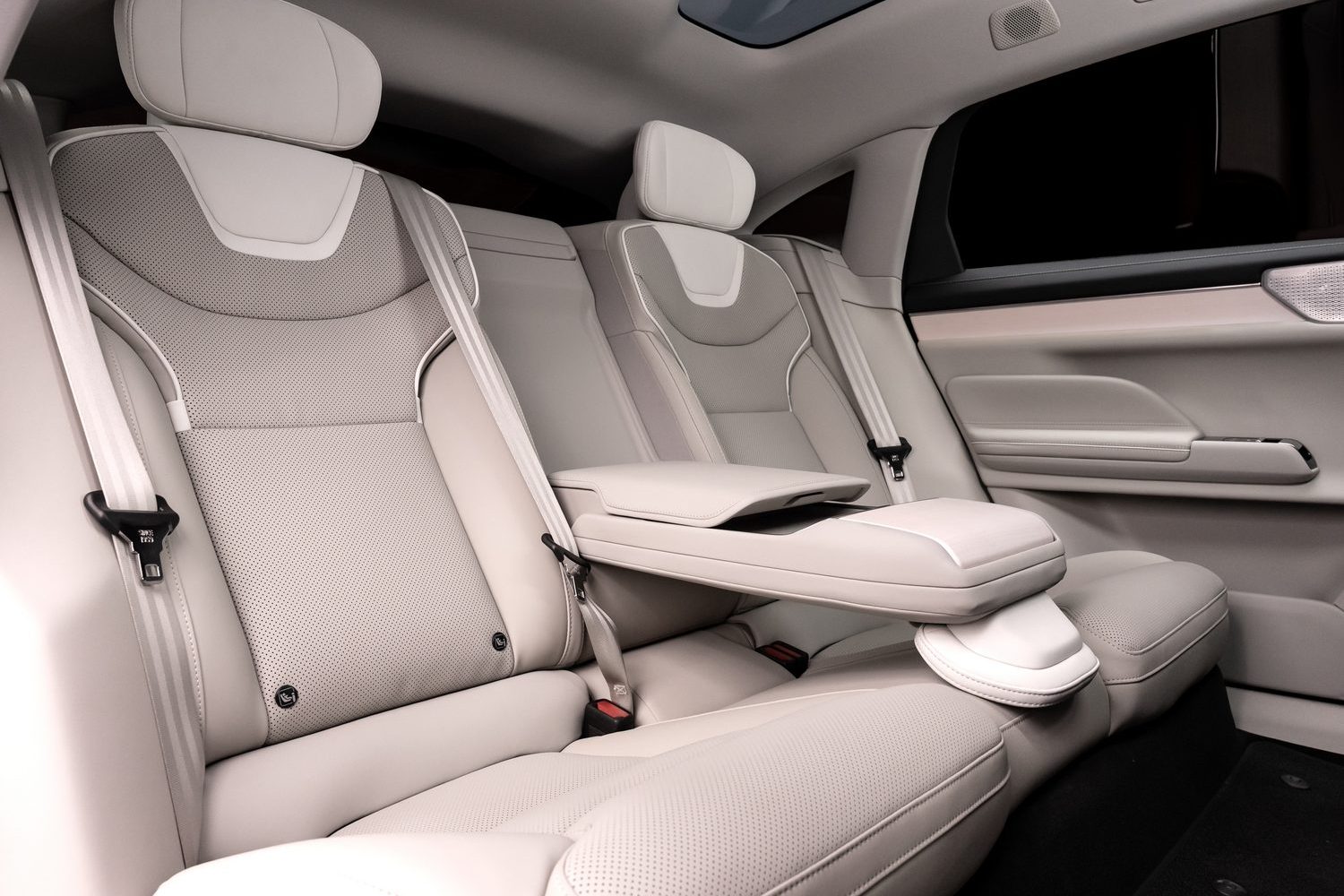
The luxurious rear seats with a lounge armrest can be individually reclined for maximum comfort. An electrochromic panoramic glass roof allows light to flood the cabin but can be easily darkened when required. A four-zone climate system uses advanced air purification to filter out 95 per cent of PM 2.5 particulates and 99.9 per cent of grass, tree and pollen allergens, earning it a certification as asthma and allergy-friendly.
All of the materials throughout the cabin are said to be inspired by Scandinavian nature and are in line with Volvo’s sustainability ambitions as it works towards net zero emissions by 2040. The ‘Nordico’ material, for example, is produced from recycled PET bottles, and the wood is FSC certified.
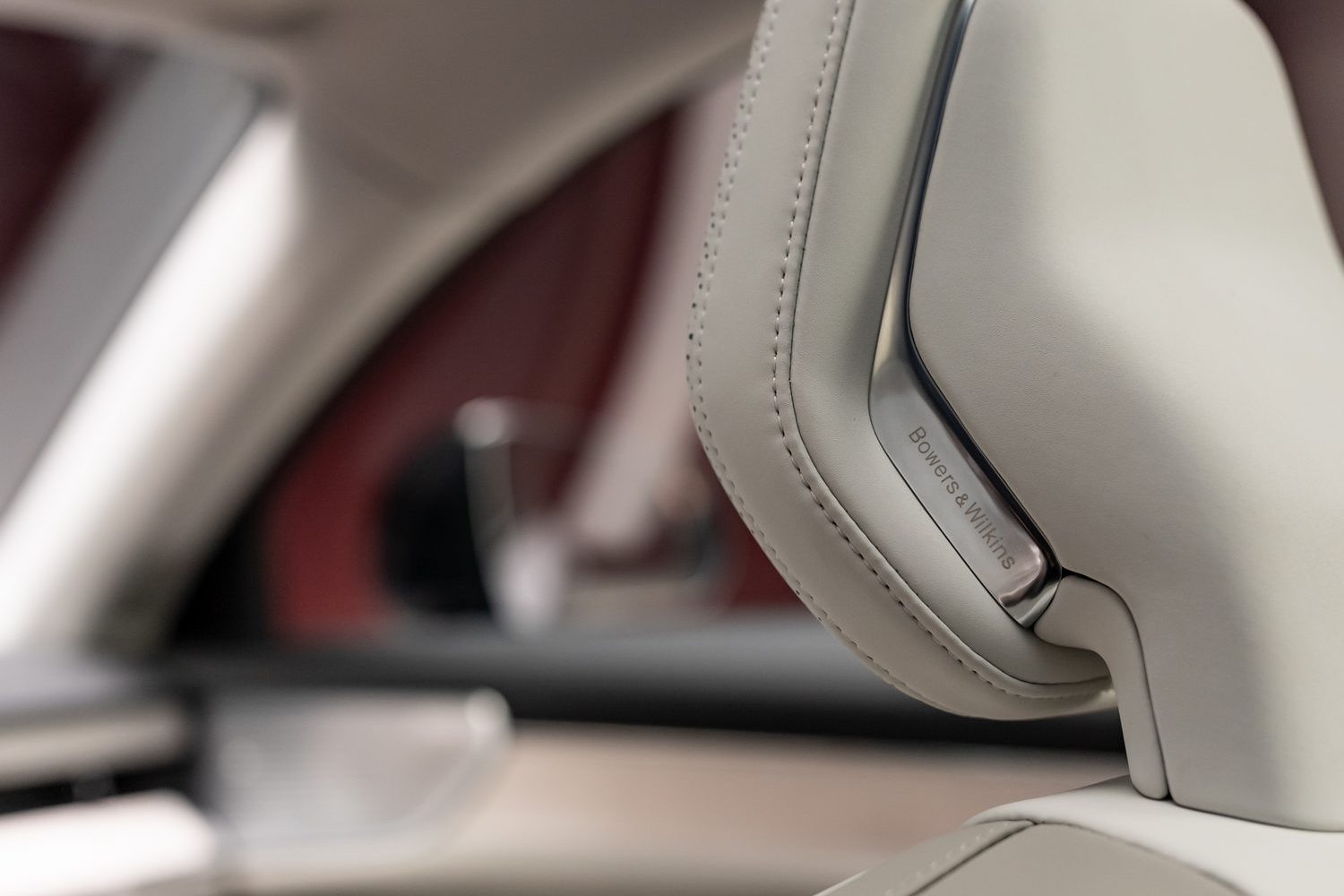
Volvo ES90 battery, range and performance
The Volvo ES90 is the most technologically advanced car the company has produced to date, and key to that is the use of an 800-volt electrical architecture on its ‘SPA2’ platform. There will be three variants, starting with a single-motor, rear-wheel-drive model using an 88kWh battery. Thanks to peak outputs of 333hp and 480Nm, this version can accelerate from 0-100km/h in 6.9 seconds.
This battery comes with a 300kW peak DC-charge rate that sees it add as much as 275 kilometres range in ten minutes. The official WLTP range in this instance is 650 kilometres.

The Volvo ES90 Twin Motor gets a 102kWh battery and peak power of 449hp from its two motors, plus up to 670Nm of torque, propelling it to 100km/h from rest in 5.5 seconds. Its greater battery capacity provides up to 700 kilometres of driving range in WLTP conditions. This battery also gets a 350kW peak DC-charge rate that can in theory add 300 kilometres to the driving range in ten minutes.
A range-topping ES90 Twin Motor Performance variant uses the same 102kWh battery but dials up its electric motors for total outputs of 680hp and 870Nm, enabling a 0-100km/h sprint in an even four seconds. Impressively, the Twin Motor Performance retains the same 700-kilometre WLTP range as the less powerful Twin Motor version.
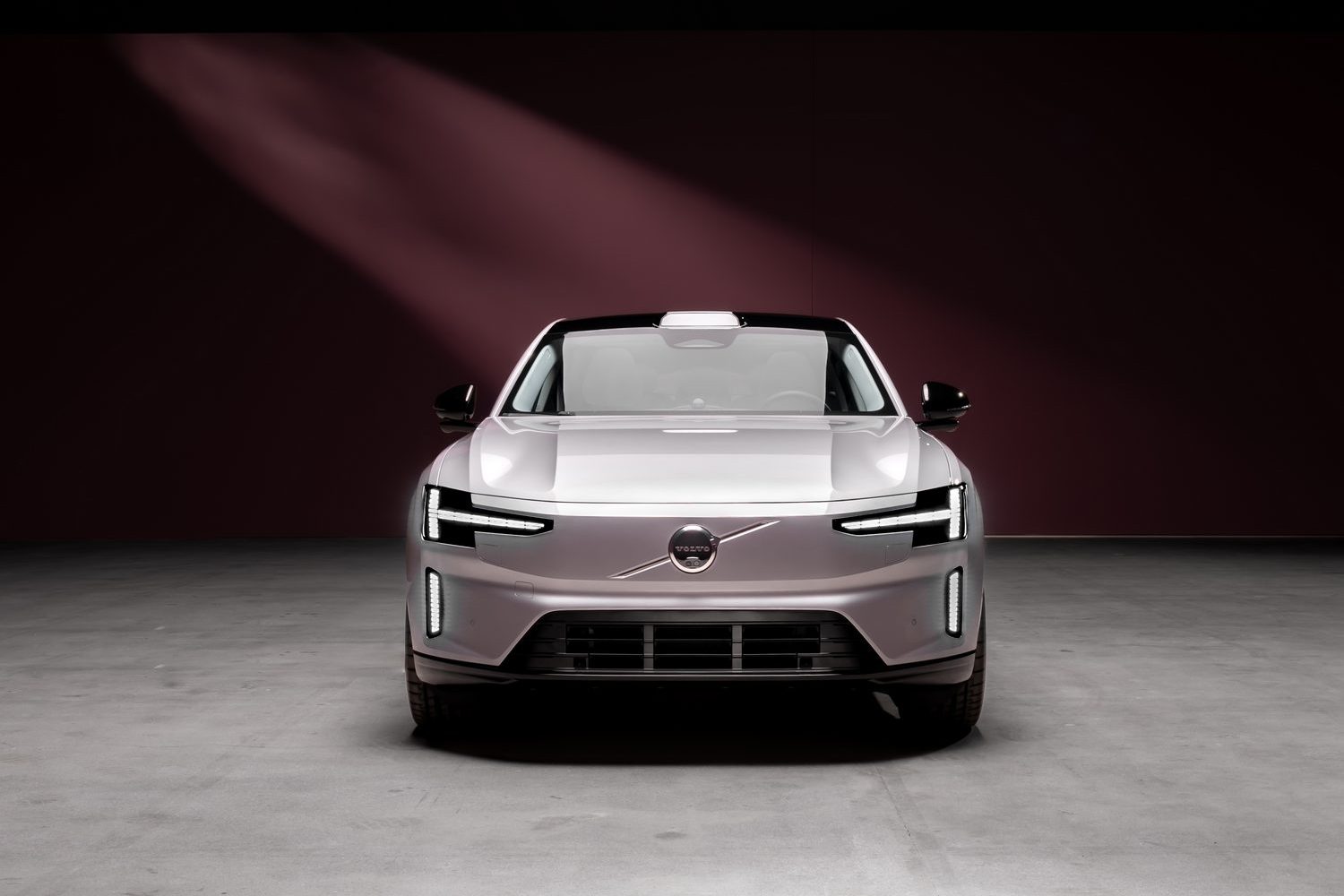
Safety in numbers
The ES90 may major on performance and tasteful design, but Volvo hasn’t faltered in its quest to make cars as safe as possible. An array of active safety systems includes one lidar (mounted above the windscreen), seven cameras to provide a detailed 360-degree view around the car and 12 ultrasonic sensors to monitor its surroundings at all times. Volvo’s ‘Superset’ tech stack powers all of that.
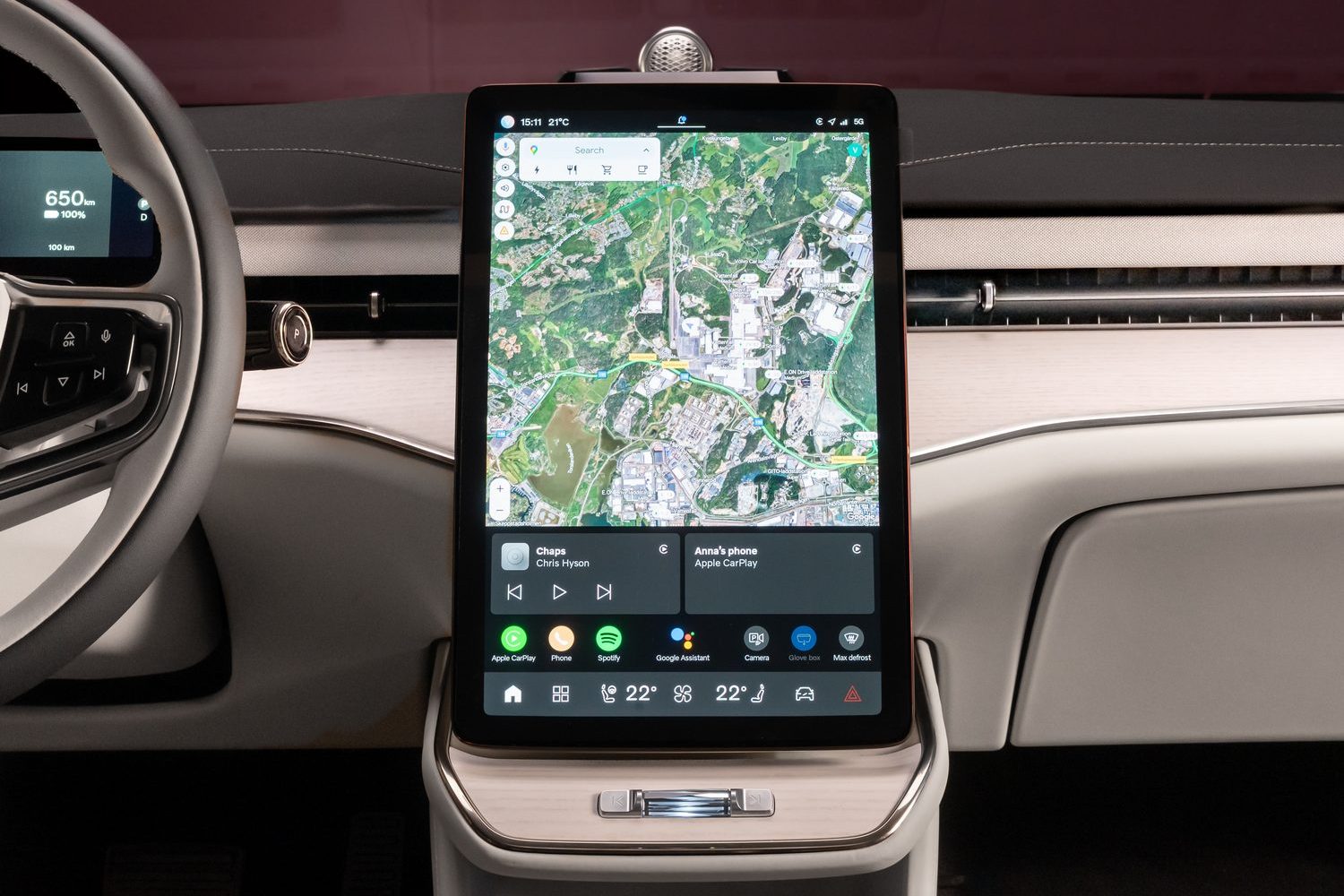
“The Superset is enabled by core computing, and the ES90 is the first Volvo car to be powered by a dual NVIDIA DRIVE AGX Orin configuration. That makes it the most powerful car we have ever
created in terms of core computing capacity,” says Anders Bell, Volvo’s chief engineering and technology officer. “This allows us to further raise the bar on safety and overall performance through data, software and AI.”
Furthermore, there are systems to protect other road users, including a door-opening alert that can detect approaching cyclists and pedestrians and alert occupants if they try to open the door. A full-cabin occupant sensing system that can detect movement on a sub-millimetre scale, such as a baby's soft breathing, is there to help you avoid leaving loved ones behind.
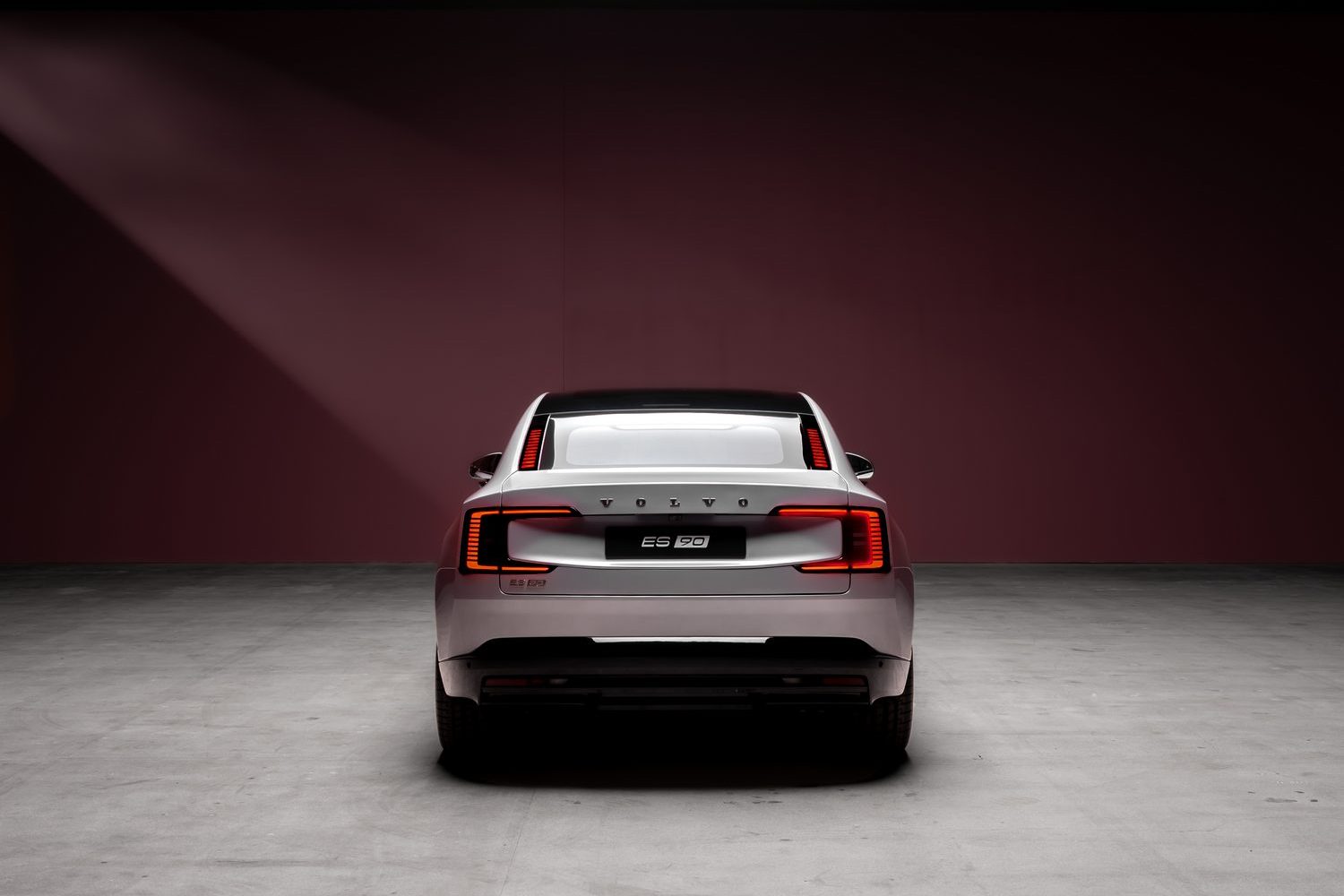
Coming to Ireland later this year
There are no prices for the Volvo ES90 in Ireland as yet, but the car is expected to arrive later this year. More detailed pricing and specifications will be confirmed closer to that time.

